Potassium Feldspar Impurity Removal Process
The impurity removal methods of potassium feldspar mainly include magnetic separation, flotation, acid leaching process, and combined process. Specifically, the appropriate impurity removal process should be selected according to the occurrence state of the impurity minerals and the particle size of the cloth. Potash feldspar often coexists with other impurity minerals. In particular, a small number of impurities such as iron and titanium elements affect its quality and application, so it needs to be treated with impurity removal.
1. Potash feldspar magnetic separation process
Iron oxide, mica, and other weakly magnetic minerals in potash feldspar ore should be separated by strong magnetic separation. The commonly used magnetic separation equipment includes wet drum magnetic separator, vertical ring pulsating high gradient magnetic separator, and flat magnetic separator, which need to be determined according to the properties of the ore.
In actual production, the magnetic separation effect of potash feldspar ore impurity reduction is mainly affected by the magnetic field strength of the magnetic separation equipment and the number of magnetic separations. The higher the magnetic field strength, the more times of magnetic separation, the less iron content of the ore, and the pulsating current can also improve the iron removal effect. It is recommended to select a reasonable magnetic separation process, magnetic separation equipment, and technical parameters based on the characteristics of potash feldspar ore and product quality requirements.
2. Potash feldspar flotation process
When the iron-containing impurities in potash feldspar are pyrite, mica, or in the form of iron-containing alkali metal silicate minerals such as tourmaline and hornblende, the flotation method is often used to remove the impurities. The conditions for removing potassium feldspar impurities by flotation are as follows:
- For sulfide minerals, under the natural pH conditions of the pulp, flotation is used to remove xanthate collectors.
- For mica minerals, it can be removed under an amine collector with a pulp pH of 2.5-3.5.
- For silicate minerals, when the pH of the slurry is 3-4, select sulfonate collectors to emerging.
Weakly acidic flotation has less reagent consumption than weakly alkaline flotation, and the output of potash feldspar is high, and the flotation effect is better. When grinding ore, try to prevent insufficient kinetic energy of particles caused by over-grinding, which makes the target mineral difficult to float.
3. Potassium feldspar acid leaching process
The acid leaching and impurity removal process is to uses acids to dissolve the iron-containing minerals in the potassium feldspar to remove iron. The acid leaching method is an effective method to deal with the extremely fine embedded crystal structure impurities in the potassium feldspar.
Commonly used acids include hydrofluoric acid, hydrochloric acid, sulfuric acid, nitric acid, and oxalic acid.
- Inorganic acids have high requirements on equipment and process conditions, and the cost is relatively expensive.
- After leaching, the waste liquid should be treated in time, otherwise, it will have a greater impact on the environment.
- Organic acids can be removed under calcination conditions without introducing impurity ions.
- Oxalic acid is more acidic and has stronger reducibility than other inorganic acids. It is an effective organic acid for dissolving iron oxides. Oxalic acid is widely used to remove iron from potash feldspar. The dissolution of hematite is slow, but iron hydroxides such as goethite and lepidocrocite are very easy to dissolve, and the iron removal rate can be as high as 90%.
4. Potash feldspar combined impurity removal process
Some hard-to-select potash feldspar ore contains high iron content, and some impurities penetrate into the cleavage gaps of potash feldspar in the form of iron staining. The single separation process cannot meet the requirements of concentrate, and a combined impurity removal process should be adopted. Such as acid leaching-flotation combined process, flotation-magnetic separation combined process, scrubbing-magnetic separation-flotation combined process, desliming-strong magnetic-acid leaching combined process, etc.
Take the combined acid leaching and flotation process for removing iron as an example. First, sulfuric acid leaching is used to remove most of the iron minerals in the ore. The product after acid leaching is used as the raw material for flotation, and sodium oleate is used as a collector for flotation separation. A small amount of iron staining compound. The whiteness of potassium feldspar is obviously improved, and the iron removal effect is good.
The magnetic separation impurity removal process is more environmentally friendly and easy to operate. It is one of the important impurity removal processes for potassium feldspar beneficiation. For potassium feldspar containing non-magnetic impurities, the flotation and impurity removal process should be adopted. For potassium feldspar containing fine particles or difficult-to-select impurities, it is advisable to adopt an acid leaching and impurity removal process or a combined impurity removal process.


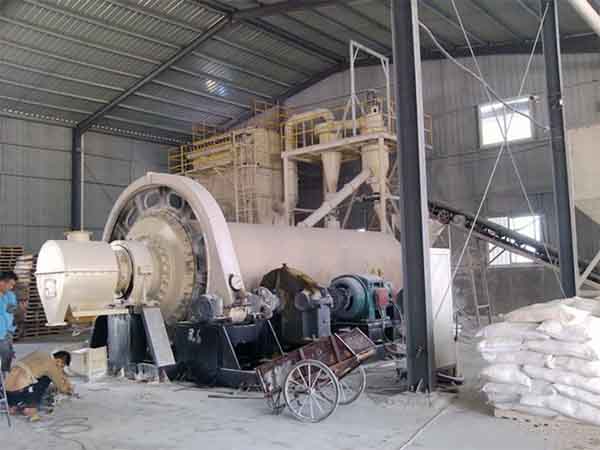
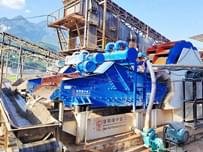
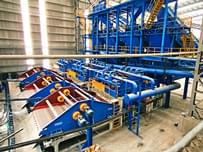
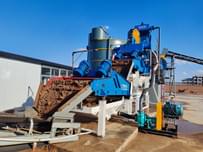
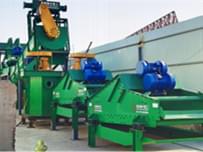
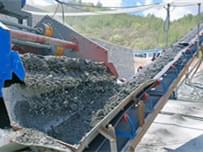
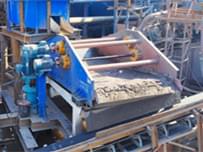
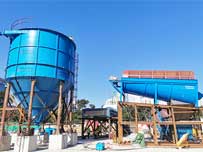
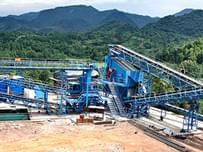




Send Message
Please write down your requirement and contact details in the following form. You can also send a message to us by this email export@lylzzg.com, we will reply to you within 24 hours.